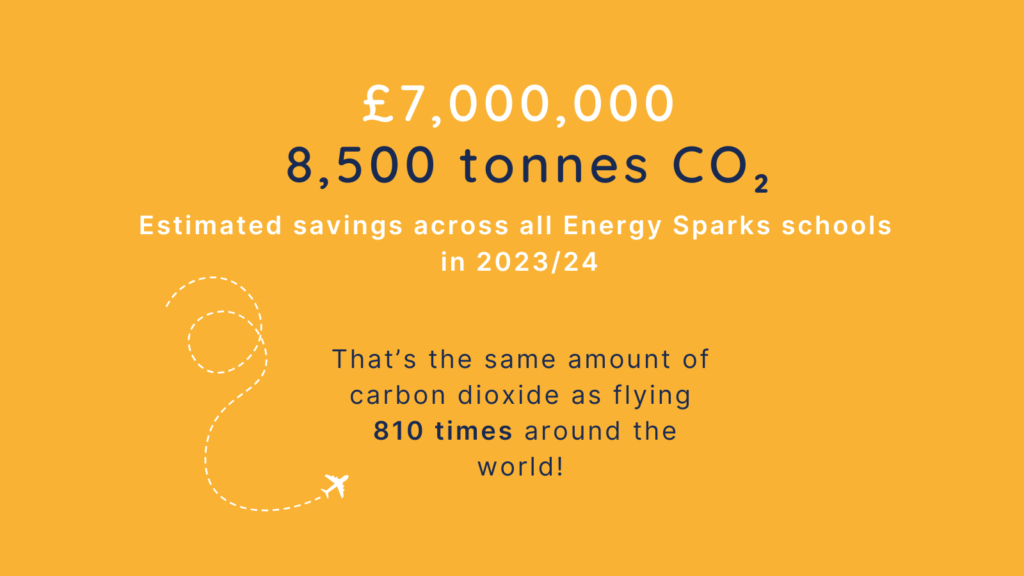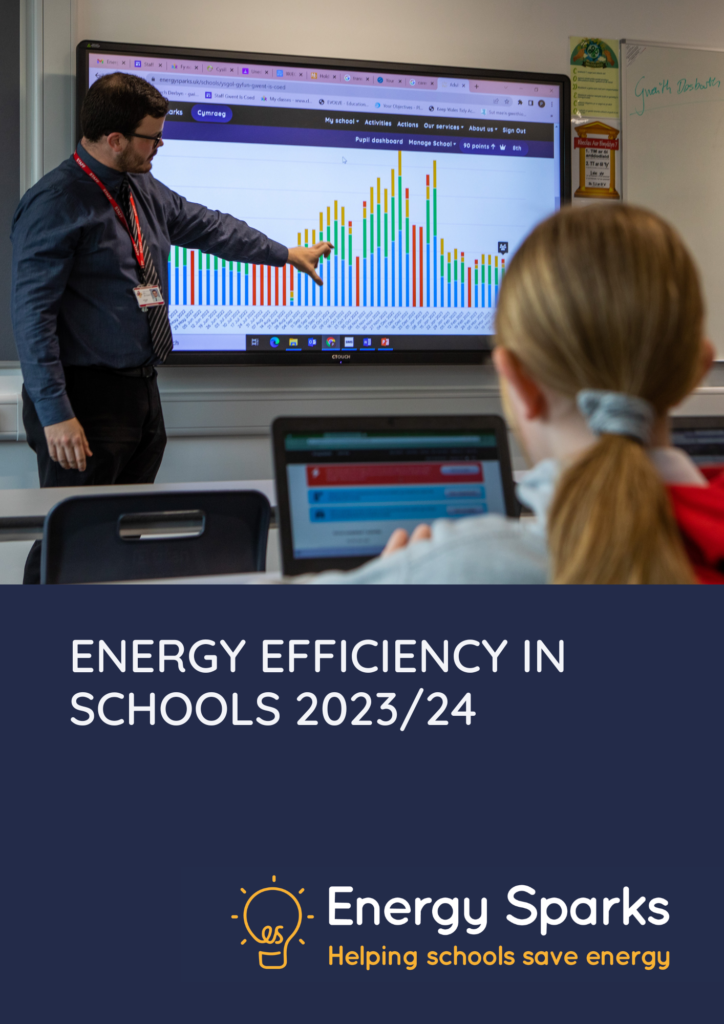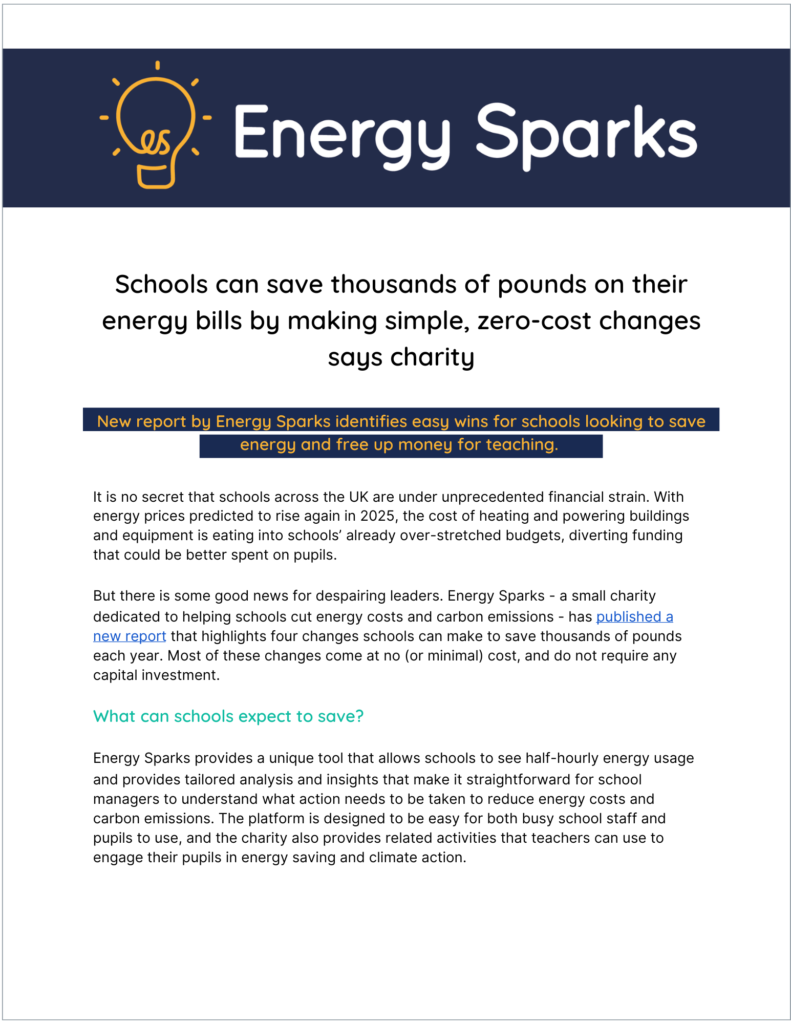Our new Energy Efficiency Report reveals schools can save thousands of pounds on their energy bills by making simple, zero-cost changes

It is no secret that schools across the UK are under unprecedented financial strain. With energy prices predicted to rise again in 2025, the cost of heating and powering buildings and equipment is eating into schools’ already over-stretched budgets, diverting funding that could be better spent on pupils.
But there is some good news for despairing leaders. Energy Sparks has published a new report that highlights four changes schools can make to save thousands of pounds each year. Most of these changes come at no (or minimal) cost, and do not require any capital investment.
What can schools expect to save?
Energy Sparks provides a unique tool that allows schools to see half-hourly energy usage and provides tailored analysis and insights that make it straightforward for school managers to understand what action needs to be taken to reduce energy costs and carbon emissions. Our platform is designed to be easy for both busy school staff and pupils to use, and we also provide related activities that teachers can use to engage their pupils in energy saving and climate action.
In the academic year 2023/24, the average savings made by a primary school signed up with Energy Sparks was £5,000 and 7 tonnes of CO2 while the average saving for a secondary school was £21,000 and 26 tonnes of CO2.
We estimate that £7,000,000 and 8,500 tonnes of CO2 were saved across all of our schools in 2023/24 – that’s the same amount of carbon dioxide as flying 810 times around the world.

Energy Sparks’ four tips for cutting energy costs
Using analysis from our unique national energy database for schools, coupled with insights from staff at partner schools, we offer the following advice for all schools and Multi-Academy Trusts looking to make savings:
1. Understand your energy use
Schools should ensure they have half-hourly meters fitted for gas and electricity supplies so that they can understand their energy use. Metering contracts also need to include half-hourly data provision to the customer or their ‘appointed third party’ (such as Energy Sparks, which then uses the data to provide bespoke insights). The additional cost of a metering upgrade can be paid back very quickly – within a few days for a large secondary school. Access to energy data allows schools to identify when energy is being used, investigate out of hours gas and electricity consumption and look into any unexpected peaks.
2. Reduce out of hours energy consumption
Short days and long holidays mean that schools are generally only open to pupils for approximately 15% of the year. Yet the Energy Sparks database shows that well over half of a typical school’s energy is used outside of school hours.
We therefore recommend creating checklists for switching lights and appliances off overnight, at weekends and at the end of term. Leaders should also make sure that it is someone’s responsibility to switch things off and perform spot checks.
Schools signed up with Energy Sparks can see charts that show their out-of-hours energy use, and can compare their performance with other schools. They also receive reminders and alerts to help them reduce out-of-hours energy use.
3. Check systems, timings and controls
Introducing and improving timers and controls is a very cheap way to reduce energy consumption. Energy Sparks recommends:
- Checking whether gas use matches expectations. Are boiler settings doing what they are supposed to?
- Adjusting timings – if the heating is coming on more than two hours before school begins, try experimenting with a later start time and checking classroom temperatures when pupils begin to arrive. Also make sure that heating switches off before the school is fully closed, as it should stay warm for a few hours.
- Checking that frost protection is set and working. This will protect pipes and buildings without the need to keep heating and water on at all times during cold weather.
- Adding seven-day timers to storage heaters, water boilers, printers and other appliances so that they switch off at the end of the day and turn on again automatically the next day.
- Checking the placement of thermostats – if these are located in drafty locations such as corridors, you may end up with heating that remains on unnecessarily, even though classrooms are too warm.
- Introducing an automatic shut down of networked ICT equipment, but not an automatic switch on in the morning.
- Ensuring that estate staff receive adequate training and handover when new heating systems or building energy management systems are installed.
4. Empower your pupils
Allow and encourage your pupils to switch lighting and equipment off when not needed. Build their analytical and investigative skills using real-life data and examples within lessons to demonstrate the difference they can make to their school and the world around them. Energy Sparks offers a wealth of free teaching resources for schools that want to involve their pupils in energy saving and climate action.
Policy implications
Under the Department for Education’s Sustainability and climate change strategy for education, schools are required to have a dedicated sustainability lead and a climate action plan in place by the end of this year.
But Energy Sparks CEO Dr Claudia Towner says she is concerned that a lack of data insights and a focus on large capital investments means that easy wins are being missed.
“What our experience shows is that any school can start to make changes right away, and that seemingly small changes to boiler settings or switching off electrical equipment outside of school hours can add up to significant savings.”
The charity’s findings are significant at a national level too.
“Given what we know about out of hours energy use, we estimate that across the UK, schools spent an estimated £900 million on heating and powering schools when they were closed to pupils,” continues Dr Towner.
A real barrier for many schools is the inability to access their half-hourly meter data. This should be provided free of charge to all public sector organisations upon request; however, Energy Sparks says that not all energy suppliers are providing this service. “Without this level of insight, schools are having to play a guessing game as to whether their heating and electricity systems are working as they ought to be,” says Dr Towner.
More generally, she feels that more could be done to support schools to make the simple changes outlined in Energy Sparks’ report. “Providing funding for all schools to better understand and optimise their heating systems, and for them to access an energy insights tool like Energy Sparks would allow sustainability leads to be effective, and would free up staff time as well as vital funds that would be far better spent on pupils,” she concludes.
Learn more

